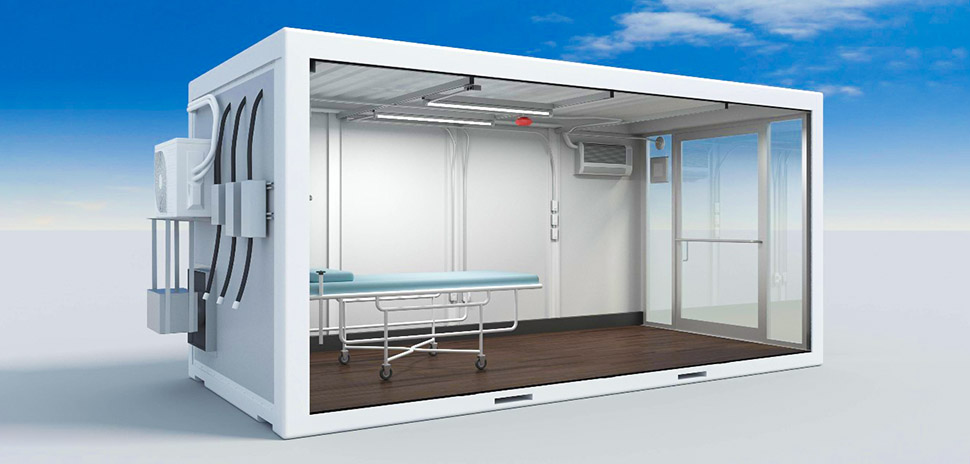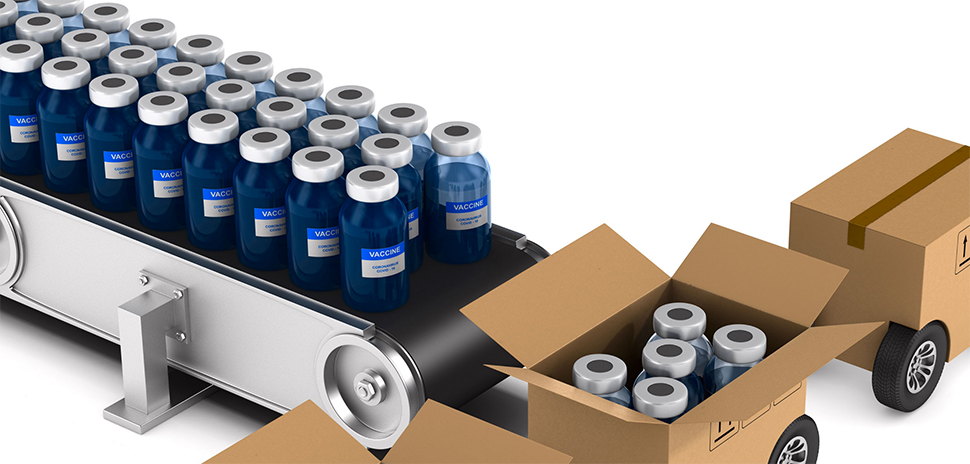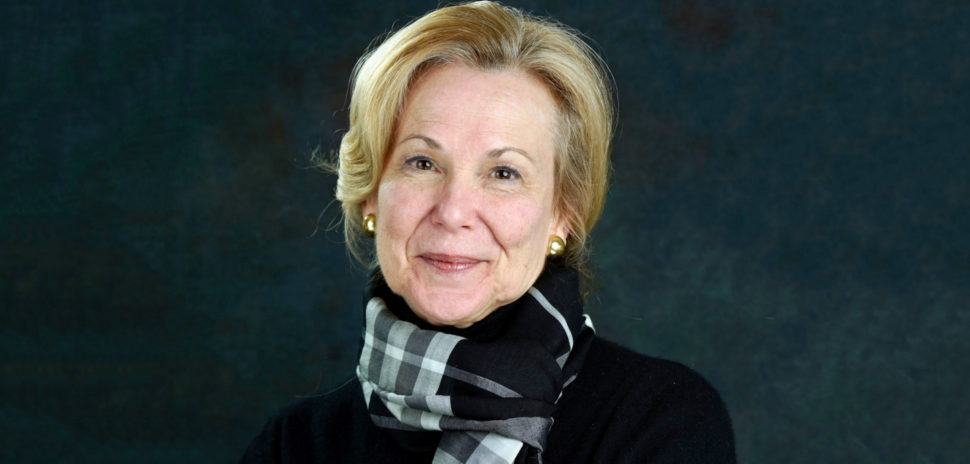Global architecture firm CallisonRTKL may have come up with a new way to treat people with COVID-19.
CallisonRTKL worked with facilities and infrastructure firm Patriot on a design-build project for the U.S Army Corps of Engineers (USACE) that uses PODS (Portable On Demand Storage) to develop containers that can be repurposed into isolation units. The aim? Alternative healthcare facilities that can use each “container” for treating people who have tested positive for coronavirus.
The conversion of PODS 12- and 16-foot containers into self-contained rooms with hospital beds that could be used for COVID-19 patients has been tested and approved. CRTKL is working with Maryland-based Patriot in a collaborative process on design-build projects for USACE.
CRTKL Senior Vice President Jim Henry is leading the firm’s COVID-19 recovery efforts out of Dallas. Henry heads the Baltimore-based firm’s healthcare practice and leads a global team from its Republic Center office in downtown Dallas.
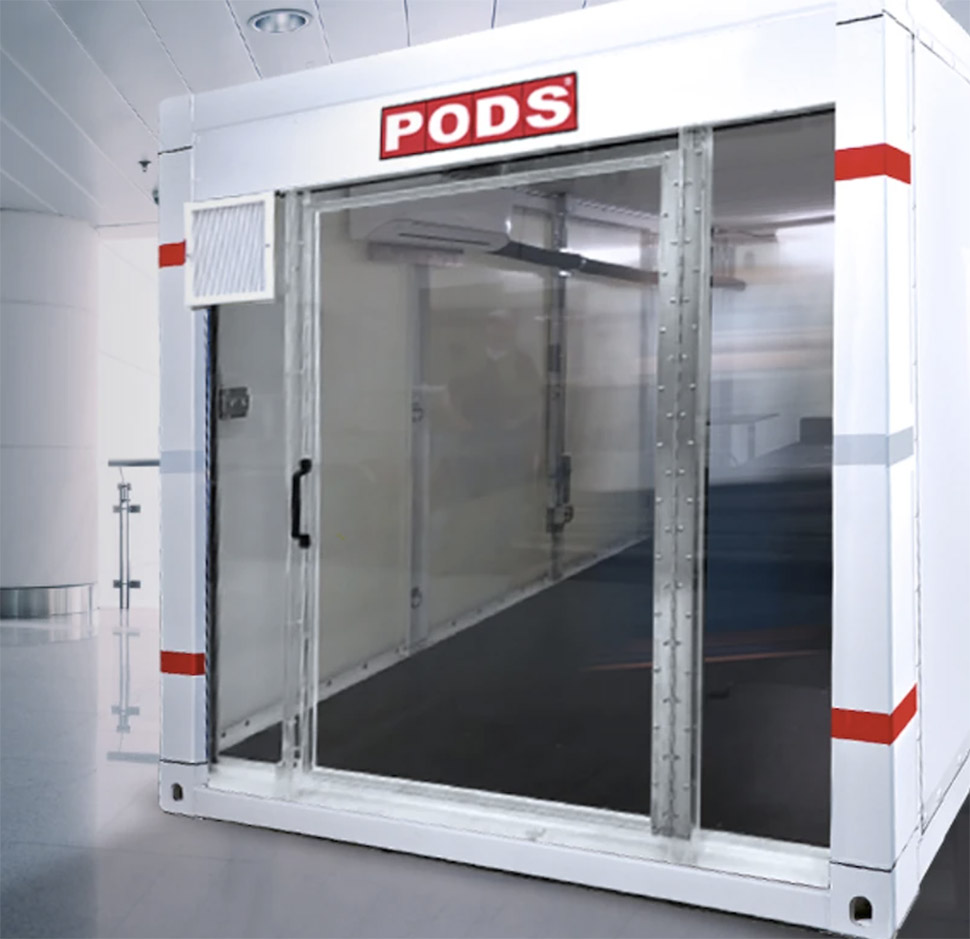
[Photo: Courtesy PODS]
In response to the pandemic, Henry and the group had been creating documents about open space design, which would involve converting an event center into a large open ward, and closed room scenarios, which include hotel and dorm room conversion.

Dallas-based Jim Henry, who has more than two decades of architecture experience, leads CRTKL’s global healthcare practice.
Design can be a catalyst for change, says Henry, who has worked on notable healthcare projects that include UT Southwestern, John Hopkins, Parkland Hospital, The Ohio State University, Rush University Medical Center, Kaiser Permanente, and Penn Medicine.
Henry says he learned there are staffing and material management benefits for the open bay option. But, the benefits of the single room scenario were far better, especially when it came to isolating patients to protect against airborne infection.
The self-contained patient care units were developed out of existing POD storage containers. The result was a rapid response airborne infection isolation room (AIIR) that could help protect those who are caring for infected patients.
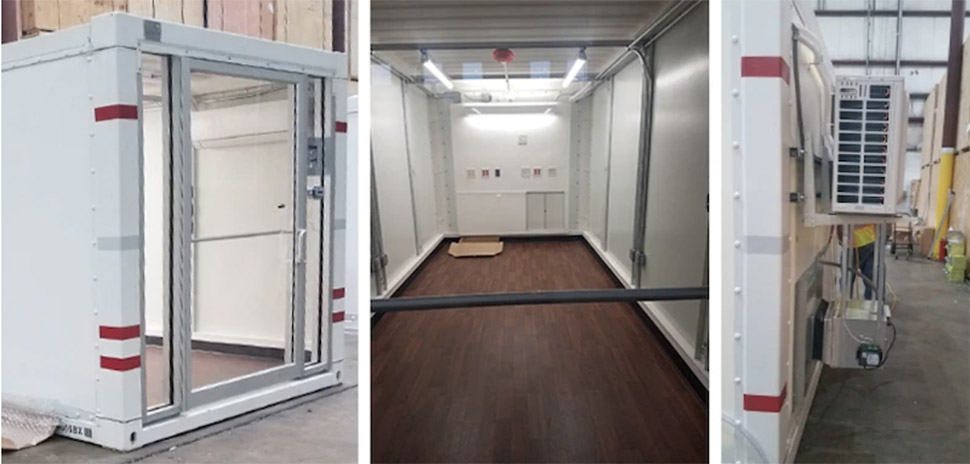
[Photos: Courtesy PODS]
Each enclosed patient care environment provides enhanced clinical staff protection, CallisonRTKL told Dallas Innovates, because it minimized exposure from direct patient contact. Every POD unit was also modified with individual environmental control, normal and emergency power, negative air pressure systems, and HEPA filtered exhaust.
For instance: the front wall of the container has a full-glass door and sidelights so patients have maximum visibility. The seamless flooring installed allows for proper housekeeping and surface disinfection, and multiple levels of lighting were installed within the container to keep patients comfortable. That includes overbed lighting for daytime settings and wall-mounted night lights.
There are also HVAC systems that CallisonRTKL said are designed to provide horizontal air flow, introducing air from the front and discharging it behind the patient at the back of the container.
Each prototype was designed and constructed in a warehouse in one week. Once constructed, they can be rapidly deployed, too—it takes 3 minutes to install each POD on-site with plug-and-play electrical service connections.
So far, six PODs have been deployed in the field inside a tent at United Medical Center in Washington D.C. According to CallisonRTKL, the U.S. Army Corps of Engineers was impressed with the innovation, speed of implementation, and high quality of the final product.
Quincy Preston contributed to this report.
The story was updated with information on CRTKL’s global healthcare practice on July 2, 2020, at 9:02 a.m. Information about facilities and infrastructure firm Patriot was added at 11:20.
![]()
Get on the list.
Dallas Innovates, every day.
Sign up to keep your eye on what’s new and next in Dallas-Fort Worth, every day.

